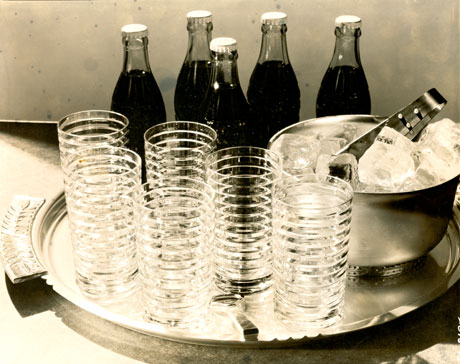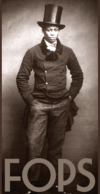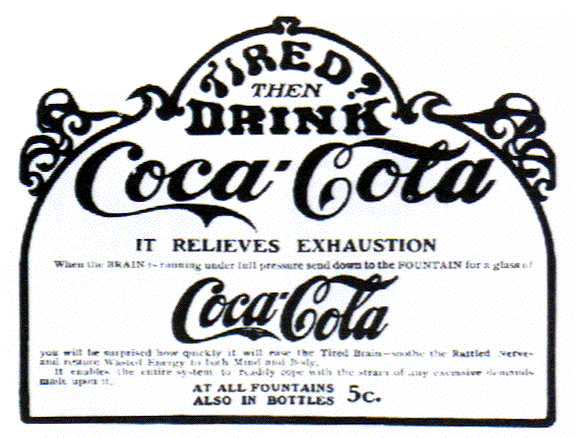
Coca-Cola, ice, and glasses on the bar, May 1935. Photograph via Condé Nast Digital Archive
Not too long ago, a friend of mine suggested I write a post explaining why wealthy people prefer Coke over Pepsi. The idea seemed absurd to me, and not just because I don’t care for either drink. Truthfully, I couldn’t imagine—let alone understand—how one cola might possibly have more luxury cachet than another. But my friend was insistent. “When have you ever heard someone order a Pepsi at a country club?” he asked. I hesitated for a brief moment and then realized my answer implicitly proved his point: “Never,” I conceded.
Summertime is arriving—the high season for leisurely picnic lunches and casual meals, meaning it’s the absolute zenith for Coke and its dominance within the upper class. A staple in every butler’s pantry, the bright-red cans (or hourglass-shaped bottles) accompany all the traditional fare wealthy families enjoy consuming in the open air. Country-club snack bars burst with Coke, boat captains appease their passengers with it on cruises, and rum pairs ably with it to create a classic, thirst-quenching kick at the cocktail hour. In all of these festive contexts, as well as countless others, it’s always Coke—never Pepsi. Evidence of this unassailable fact is conspicuous everywhere this time of year, as I observed over and over again this Memorial Day weekend.
Affluent devotees of the original cola like its history, its pedigree, and its aesthetics—especially the quintessentially American drink’s glass-bottle version. It’s part taste, part snobbery: rich people genuinely believe the cane-sugar Coke in bottles, often made in Mexico, is more delectable and satisfying than the U.S.’s corn-syrup version in the cans. That preference encourages the pretension of sipping from those charming little glass vessels—and what a sight awaits the guest who opens a host’s fridge to find entire shelves of foreign-version Cokes, their exotic bottle labels neatly facing forward. It’s a small expression of the kind of extravagance reserved for those who aren’t required to balance a budget, or worry about stocking their own kitchen without professional help.
In more cosmopolitan settings, Coke does get nudged from its top perch, but only by Diet Coke, which escapes occasionally gluttonous, less-refined connotations of regular Coke. Fashion models kick-started this notion among posh city residents in the 1990s, when the drink became a symbol of chic international living. Pepsi never captured that distinction, so the trim and stylish field fell heavily to Coke.
What isn’t so clearly defined is the origin of the bias against Pepsi. The rich don’t seem to like it, but when I asked people why, I received wildly varying explanations for its second-class status. One guy said it’s because Pepsi implies pedestrian Midwestern tastes (even though the drink hails from upstate New York). Another said he didn’t know why Pepsi is considered déclassé, but then confidently observed that top Pepsi executives themselves feel that it is. They don’t even want to suffer the embarrassment of ordering it in front of their well-to-do friends. Finally, another fellow explained that he felt the story of the South American billionaires, the Cisneros family, highlighted the point best. This powerful clan had the largest Pepsi bottling plant in Venezuela for years, and with it an overwhelming competitive edge in the regional market. But in a moment, they switched allegiances, privately signed a deal to bottle Coke, and knocked Pepsi, the resulting stepchild, entirely out of the market. In terms of reputation, he insinuated, it’s Coke that always seems to have the upper hand.

